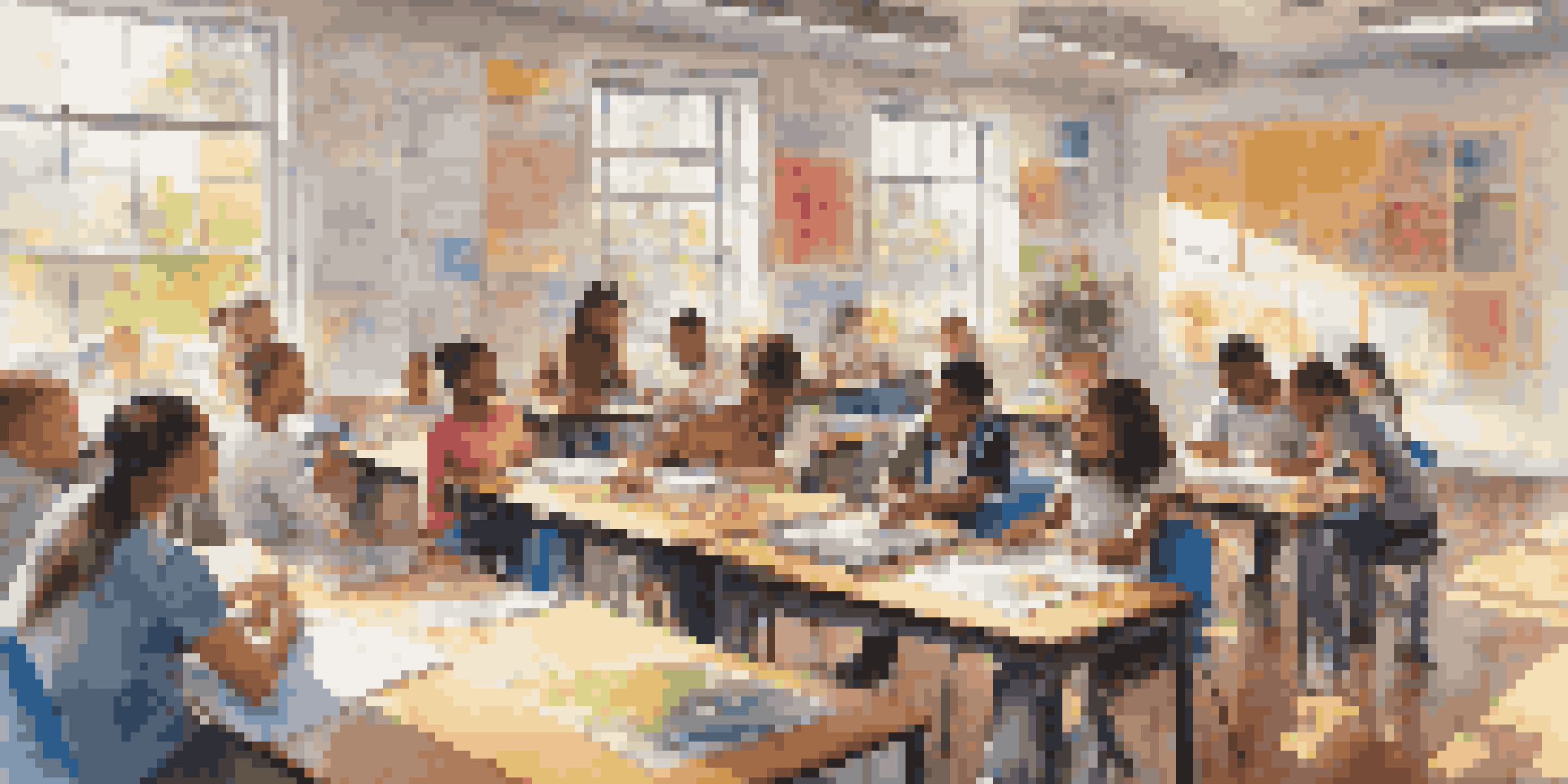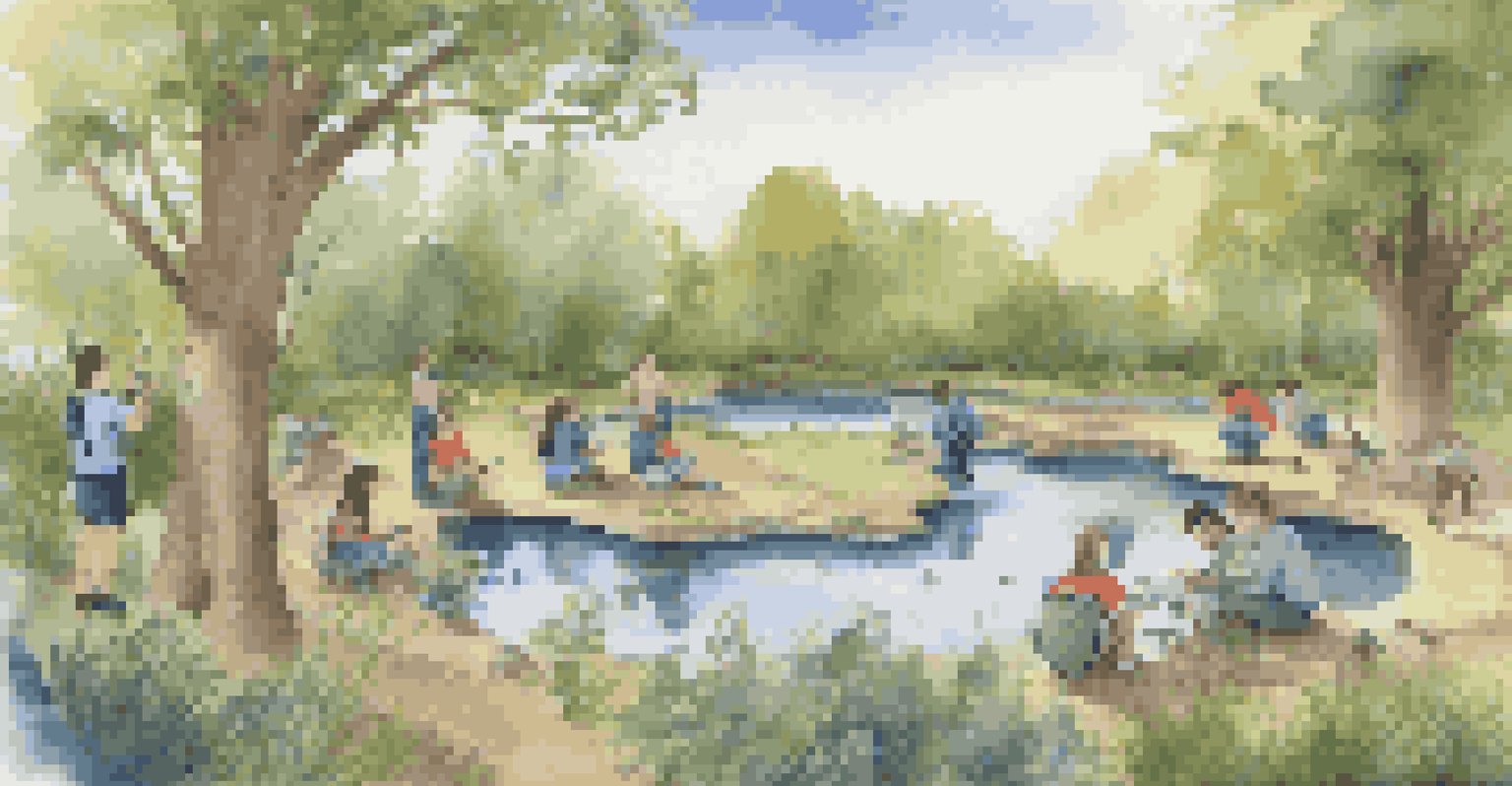Enhancing Critical Thinking Through Constructivist Practices

Understanding Constructivism: A Foundation for Learning
Constructivism is a learning theory that emphasizes the active role of learners in constructing their own understanding. Instead of passively receiving information, students engage with concepts, relate them to their experiences, and build their knowledge base. This approach fosters deeper cognitive engagement, making learning more meaningful and relevant.
Learning is not a spectator sport.
For example, when students work on a project that requires them to solve real-world problems, they’re not just memorizing facts; they’re applying their knowledge in a practical context. This hands-on experience helps solidify their understanding and encourages critical thinking. The process of inquiry and exploration is at the heart of constructivist practices.
Ultimately, constructivism empowers students to take ownership of their learning journey, leading to greater motivation and better retention of information. By encouraging learners to question, analyze, and synthesize, constructivist practices lay a strong groundwork for developing critical thinking skills.
The Role of Inquiry-Based Learning in Critical Thinking
Inquiry-based learning is a key component of constructivist practices, promoting curiosity and exploration. In this approach, students are encouraged to ask questions, conduct research, and engage in discussions that challenge their assumptions. This active participation not only enhances critical thinking but also nurtures a love for learning.

For instance, instead of simply reading about ecosystems, students might investigate their local environment, collecting data on plants and animals, and presenting their findings. This hands-on inquiry fosters a deeper understanding of the subject matter, as students learn to analyze and interpret information rather than just memorize it.
Active Learning Boosts Understanding
Constructivism emphasizes the active role of learners in constructing their own knowledge, making education more meaningful.
By fostering a culture of inquiry, educators can create an environment where critical thinking flourishes. Students learn to evaluate sources, assess evidence, and draw logical conclusions—all essential skills for navigating the complexities of the modern world.
Collaborative Learning: Strengthening Critical Thinking Skills
Collaboration is another powerful tool in constructivist learning that enhances critical thinking. When students work together on projects or discussions, they’re exposed to diverse perspectives and ideas. This exchange of viewpoints encourages them to critically evaluate and reconsider their own beliefs and assumptions.
Tell me and I forget. Teach me and I remember. Involve me and I learn.
For example, in a group project, students might need to debate various solutions to a problem, engaging in constructive dialogue. Through this process, they learn to articulate their thoughts, listen actively, and respond thoughtfully, all while practicing critical thinking skills in a supportive environment.
Moreover, collaborative learning fosters a sense of community and belonging among students. As they engage in teamwork, they develop social skills and emotional intelligence, which are crucial for effective communication and conflict resolution—key components of critical thinking.
Real-World Applications: Bridging Theory and Practice
One of the strengths of constructivist practices is their emphasis on real-world applications. By connecting classroom learning to real-life scenarios, students can see the relevance of their education. This connection not only makes learning more engaging but also encourages critical thinking as they navigate complex situations.
For instance, a project that requires students to develop a marketing plan for a local business challenges them to apply various concepts creatively and analytically. They must research market trends, analyze consumer behavior, and present viable strategies, all of which require critical thinking skills.
Collaboration Enhances Critical Thinking
Working together in groups exposes students to diverse perspectives, fostering critical evaluation of ideas and beliefs.
By engaging with real-world challenges, students learn to approach problems with an analytical mindset. This experience prepares them for future endeavors, whether in higher education or the workforce, where critical thinking and problem-solving are essential.
Feedback Mechanisms: A Tool for Reflection and Growth
Feedback is a crucial element in constructivist learning, acting as a catalyst for reflection and improvement. Constructivist practices encourage regular feedback from peers and teachers, allowing students to gain insights into their thought processes and performance. This reflection is vital for developing critical thinking skills.
Consider a scenario where students present their projects and receive constructive feedback from their classmates. This process not only helps them identify areas for improvement but also encourages them to think critically about their work and the perspectives of others. It fosters a growth mindset, where students view mistakes as learning opportunities rather than setbacks.
Incorporating feedback into the learning process creates an ongoing dialogue about ideas and skills. Students learn to appreciate different viewpoints and refine their own thinking, ultimately enhancing their critical thinking abilities.
Assessment Strategies: Measuring Critical Thinking Development
Assessing critical thinking skills can be challenging, but constructivist practices provide innovative strategies to measure student growth. Traditional assessments often focus on rote memorization, while constructivist assessments emphasize application, analysis, and synthesis of knowledge. This approach reflects a more accurate picture of a student’s critical thinking capabilities.
For example, project-based assessments allow students to showcase their understanding through creative outputs, such as presentations or models. These assessments require students to think critically about their work and demonstrate their reasoning and decision-making processes.
Real-World Applications Matter
Connecting classroom learning to real-life scenarios enhances engagement and encourages students to apply critical thinking skills.
By implementing varied assessment strategies, educators can better evaluate students' critical thinking development. This not only helps identify areas for improvement but also encourages students to engage in deeper learning experiences.
Creating a Constructivist Classroom: Practical Tips
Building a constructivist classroom requires intentional planning and a shift in instructional strategies. Educators can start by creating a learning environment that encourages inquiry, collaboration, and real-world connections. This involves designing activities that allow students to explore topics deeply and express their understanding creatively.
For instance, incorporating project-based learning or problem-solving activities can stimulate curiosity and foster critical thinking. Additionally, teachers should model critical thinking behaviors, showing students how to question assumptions and analyze information critically.

Lastly, fostering a classroom culture that values diversity of thought is essential. Encouraging students to share their perspectives and experiences enriches discussions and enhances critical thinking, helping students learn from one another.